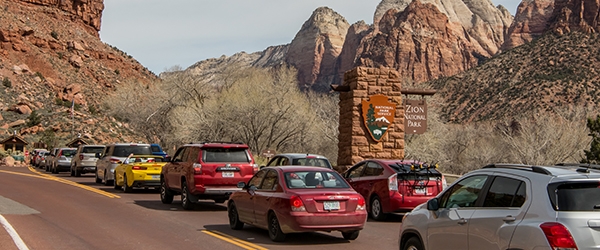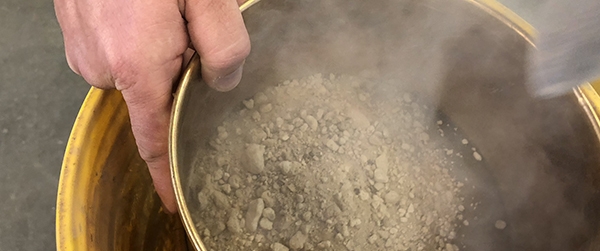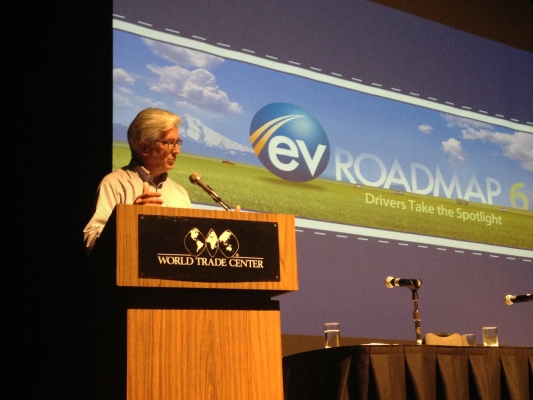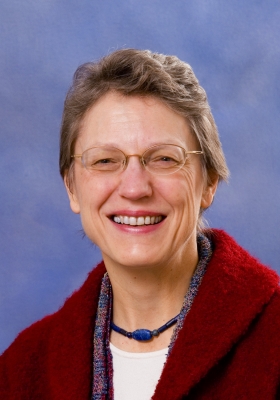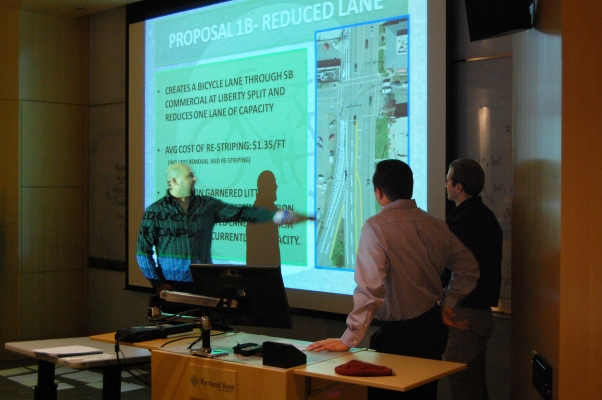Western North America boasts an...
Read moreThe latest Small Starts study from the National Institute for Transportation and Communities (NITC) offers sustainable road building materials for rural infrastructure, from an unlikely source.
Approximately 7,000 years ago, the eruption of Oregon's Mt. Mazama blanketed the Klamath Basin region with a thick layer of volcanic ash. Matthew Sleep, an associate professor of civil engineering at Oregon Tech, investigated the use of this ash as a natural pozzolan for soil stabilization and unpaved roadway improvement. He found that the ash, prevalent in Southern Oregon, has the potential to be used for gravel roadway dust abatement.
Portland cement, the current industry standard, is a basic ingredient in concrete and mortar. A caustic material that causes chemical burns, it was first developed in the 19th century. It’s time for a new approach.
A...
A newly published NITC education project offers tools for teaching collaborative regional planning in communities close to national parks and other natural attractions.
Referred to as Gateway and Natural Amenity Region (GNAR) communities, these unique places have their own set of challenges and opportunities. They are often located near small towns or rural areas with limited transportation networks, but due to the periodic influx of visitors, can experience “big city problems” like congestion and sprawl.
... Read moreSeven Oregon Tech students attended a sustainable pavement conference in Portland thanks to NITC program funding. The 2015 Asphalt Sustainability Conference West highlighted innovations in technologies and practices.
Danit Hubbell, Oregon Tech’s ITE student chapter president, said she and the other students who made the trip last month are all transportation focused, though they have varying degrees of interest in asphalt. The conference featured a good mix of topics, she said.
The term “sustainability” can vary based on context, and that was reflected in the conference sessions, Hubbell said. “One presenter talked about it as the asphalt itself and the materials it’s made out of. For others, it was the transportation and the longevity.
“I think it encompasses both of those,” she said.
Asphalt paving has come a long way in the last few years, Hubbell said, with sustainability driving much of the changes. Oregon Tech has stayed on top of those innovations, she said, as all civil engineering students must complete a infrastructure sustainability course.
The conference seemed to draw more transportation practitioners than students, Hubbell said, which was part of its appeal. The Oregon Tech students relished the opportunity to browse the exhibitors’ tables and talk with professionals from various organizations.
Hubbell, who graduates next March, already has a job lined up. She’ll join Kiewit Infrastructure...
John MacArthur, OTREC’s Sustainable Transportation Program Manager, was a panel moderator at this year's EVRoadmap 6 workshop.
The EV Roadmap workshop series has established itself as the Pacific Northwest’s premier electric vehicle gathering, with a goal of increasing the visibility and understanding of electric vehicles.
Co-sponsored by Portland General Electric and Portland State University, the event supports the shared goal of building a stronger, more sustainable transportation landscape.
The sixth annual EV Roadmap workshop, "Drivers Take the Spotlight," was a continuation of this fruitful partnership. The event was held at the World Trade Center in Portland on July 30-31, 2013. MacArthur moderated a panel titled "Not All Drivers Need Four Wheels." This panel focused on odd-sized electric vehicles such as e-bikes.
E-bikes are a specialty of MacArthur's; he has conducted several research studies about people's use and perceptions of the electric-assisted bicycle. His project "Evaluation of Electric Bike Use in Portland Metro Region" (click here for more information about that project, or to download the final report) focused on exploring the potential new market segments for e-bikes and the economic, operational, safety, and...
Read moreDavid Timm, P.E., the Brasfield & Gorrie Professor of Civil Engineering at Auburn University, traveled to Oregon in mid-March as part of the NITC Visiting Scholar program.
Timm is recognized nationally and internationally as a leading expert in the field of perpetual pavement, a sustainable approach to pavement design. He is also the author of a perpetual pavement design software, PerRoad. Engineers in this field have developed a pavement system that has the potential to last for up to 50 years, with only minor periodic surface repairs.
The visit, arranged by Oregon Tech’s NITC Executive Committee member Roger Lindgren, started with a March 13 PerRoad workshop in Salem. The workshop was attended by designers from industry and from the Oregon Department of Transportation (ODOT).
On March 14, Timm led another PerRoad workshop on the campus of Oregon Institute of Technology in Klamath Falls. Following the workshop was a presentation, focusing on perpetual pavement design and the advancements being made at Auburn’s National Center for Asphalt Technology (NCAT).
The Klamath Falls workshop was attended by 14 engineers and engineering students, with 53 people attending the presentation afterward.
Last week in Portland, family, friends, and colleagues gathered to remember one of Oregon’s most stalwart and effective public servants, Gail Achterman. Gail committed her life to furthering environmental and transportation issues to improve the quality of life in Oregon. Her commitment to improving and connecting transportation with land use and environmental policy was the reason she received the 2011 OTREC DeFazio Transportation Hall of Fame Award.
A fourth-generation Oregonian, Gail distinguished herself in law and natural-resource issues (as the Director of the Institute of Natural Resources at OSU) even before her involvement in transportation. As Chair of the Oregon Transportation Commission, Gail provided policy guidance to move the Oregon Department of Transportation (ODOT) toward a sustainable future. She has been instrumental in expanding the focus of ODOT beyond highways to include a complete multi-modal transport system.
Recognizing the importance of working smarter, not harder, Gail championed an aggressive program to advance Oregon’s sophisticated integrated models for transportation, land use and the economy. The program boosted efforts such as the GreenSTEP model to address greenhouse gas emission reductions, research into least-cost planning concepts...
Read morePortland State University transportation engineering students added their expertise to a yearlong effort to help Salem reinvent itself. The Urban Transportation Systems class looked at options to improve bicycle and pedestrian travel in the city’s downtown core.
The effort is part of the Sustainable Cities Initiative, one of three OTREC-funded initiatives. The initiative, led by co-directors Marc Schlossberg and Nico Larco at the University of Oregon, chooses one Oregon city per year to make its classroom, directing coursework to help the city adopt sustainable practices.
This year is the first to include Portland State University’s participation. Students in assistant Professor Chris Monsere’s Civil Engineering 454 class gave presentations Nov. 29 and Dec. 1 on several alternatives to improve bicycle and pedestrian transportation and safety. Projects included:
- Accommodating the bicycle and pedestrian crossing on Union Street at Commercial Street while considering impacts to automobile traffic
- Connecting cyclists and pedestrians at the end of the Union Street path at Wallace Road
- A bicycle and pedestrian route west of Wallace Road
- Converting selected one-way streets to two-way operation
- Traffic analysis of options drafted by bicycle advocates for the intersection of Commercial and Liberty streets at Vista Avenue ...
The Oregon Transportation Research and Education Consortium held the West’s first listening session Wednesday under the Sustainable Communities Partnership, the effort to get federal agencies working together on green transportation and housing projects. Regional administrators from the Department of Transportation, the Department of Housing and Urban Development and the Environmental Protection Agency met with local, regional and state leaders for open-ended discussions on building sustainable communities.
More than 150 people attended the daylong Oregon Community Dialogue at Willamette University in Salem, organized by OTREC and facilitated by the National Policy Consensus Center. In one-on-one interviews, participants brainstormed the barriers to sustainable communities, the existing opportunities to work together and actions they could take to take to make their own communities more sustainable. They also discussed what they could accomplish if agencies did a better job of working together to pay for projects.
The discussions produced the following insights:
- Barriers to sustainable communities include a lack of shared vision on results, a lack of integration and coordination, a lack of marketplace incentives and confusion over how to achieve the goals.
- Federal agencies working better together would create opportunities for collaboration at all levels of government, give flexibility to use resources in new ways, allow for a better...

